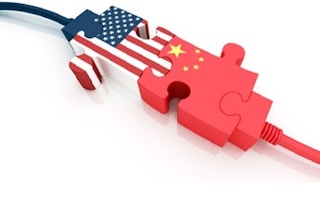The recent rise in oil prices reminds us that volatility will remain a core feature of the global hydrocarbon market. But what are the more fundamental changes we can expect over the next decade? In my 30 years in the energy business, I have witnessed several major periods of change. The rise of OPEC’s power marked the early 1980s. The rise of the super majors then followed the discoveries of oil outside OPEC’s sphere of influence. And we have now seen the impact of emerging market demand and the rise of National Oil Companies.
New sources of hydrocarbons and related technologies are now helping to reshape the industry in new ways over the next few years. However, we will also see a significant disruption, thanks to outside forces: The rise of renewable energy and alternative transport fuels.
Race between the US and China
We have been taking a closer look at the emergence of new transport fuels, given that transport accounts for about 60 per cent of global oil consumption. Our research led us to explore an interesting dichotomy: The race between the US and China in the pursuit of alternative transport fuels and the impacts on their respective economies. Both countries aim to reduce dependence on petroleum and this goal is driving their investment in new technologies.
A pretty realistic scenario for the US is the implementation of a fuel-efficiency standard to 40 miles per gallon by 2030 and the blending of 30 billion gallons of biofuels. We calculate that this would replace more than 30 per cent of gasoline and diesel demand by 2030 relative to 2010. As a result, US crude imports would be reduced by approximately 1 billion barrels of oil by 2030 compared with the volume imported in 2009.
China’s goal is to have alternative energy make up 30 per cent of transport fuels by 2020. Today, it imports more than half its total petroleum consumption and, with the decline in domestic oilfield production and the rise in demand for hydrocarbon fuel, the country’s dependence on oil imports is growing. According to our analysis, the alternative energy industry could substitute traditional transport fuels to save oil imports by 21 per cent in China by 2020.
Nature of investments differs
It is, however, the differences in the nature of each country’s investments that strikes me as most telling. We conclude that China could enjoy a competitive advantage over the US in electric vehicles, thanks to its state-backed focus on this area of technology, its domestic supplies of lithium and its current battery production capability.
The US’ market-led approach will result in a more gradual development of new technologies and disparate federal funding could place it at a disadvantage. However, the US will be better placed to create new innovations across many platforms that can be integrated into the existing fuel supply infrastructure. These cover advanced combustion engines, electric technologies and advanced biofuels.
In short, China’s decisiveness will allow it to scale out and achieve its targets faster, but in a narrower field of technologies. While the US may be slower in its development, its openness to new and disruptive technologies is more likely to generate breakthrough technologies.
Competitiveness also differs
What of the impact on the competitiveness of the two countries? The rise of new fuels and the reduction in gasoline demand will have major negative consequences on US refining. The worst effects will be felt by those refineries currently configured to maximise gasoline production.
Meanwhile, in China, there will be no losers, not least because we estimate that car ownership will almost triple between now and 2020 to approximately 200 million, creating growth for all forms of fuel: Biofuels, electric and hydrocarbons.
For the US, we can expect to see smaller refineries close or be disposed of, while larger more flexible ones respond by adjusting their gasoline/diesel mix. And clearly, oil companies will have to create closer links with agriculture to secure supply of biofuel feedstock.
Meanwhile, China has supply chain problems of its own. It could be constrained by bottlenecks such as feedstock availability for cellulosic ethanol and high battery costs. Policymakers will have to target financial incentives to relieve these bottlenecks. Although China’s top-down approach will serve the country’s large-scale implementation well in the medium term, the country will also have to supplement this investment and policy-driven direction with more consumer-oriented business models and an improved understanding of consumer demand.
And if China is to go beyond rapid implementation towards genuine innovation, it will require more transparent intellectual property processes, talent strategies and incentives to attract funding to new fuel industries.
Unlike some of the other major disruptions to the sector, the rise of new transport fuels comes from outside rather than from within. The industry has responded to equally large challenges in the past and I am optimistic that it will be able to do so this time. As the world’s two largest markets for road vehicles and oil, China and the US will feel the consequences of these new changes. But the industry in other parts of the world will have to take careful note of how these two economies square up to the challenge.
By Arthur Hanna, Accenture APAC Utilities Industry Lead
This article accompanies the Accenture report, “The Case for City Disclosure, written for Carbon Disclosure Project (CDP).
Accenture is a sponsor of the Singapore Energy Summit Networking Lunch at the Singapore International Energy Week (31 October – 4 November 2011). For more information, kindly visit http://siew.sg.











